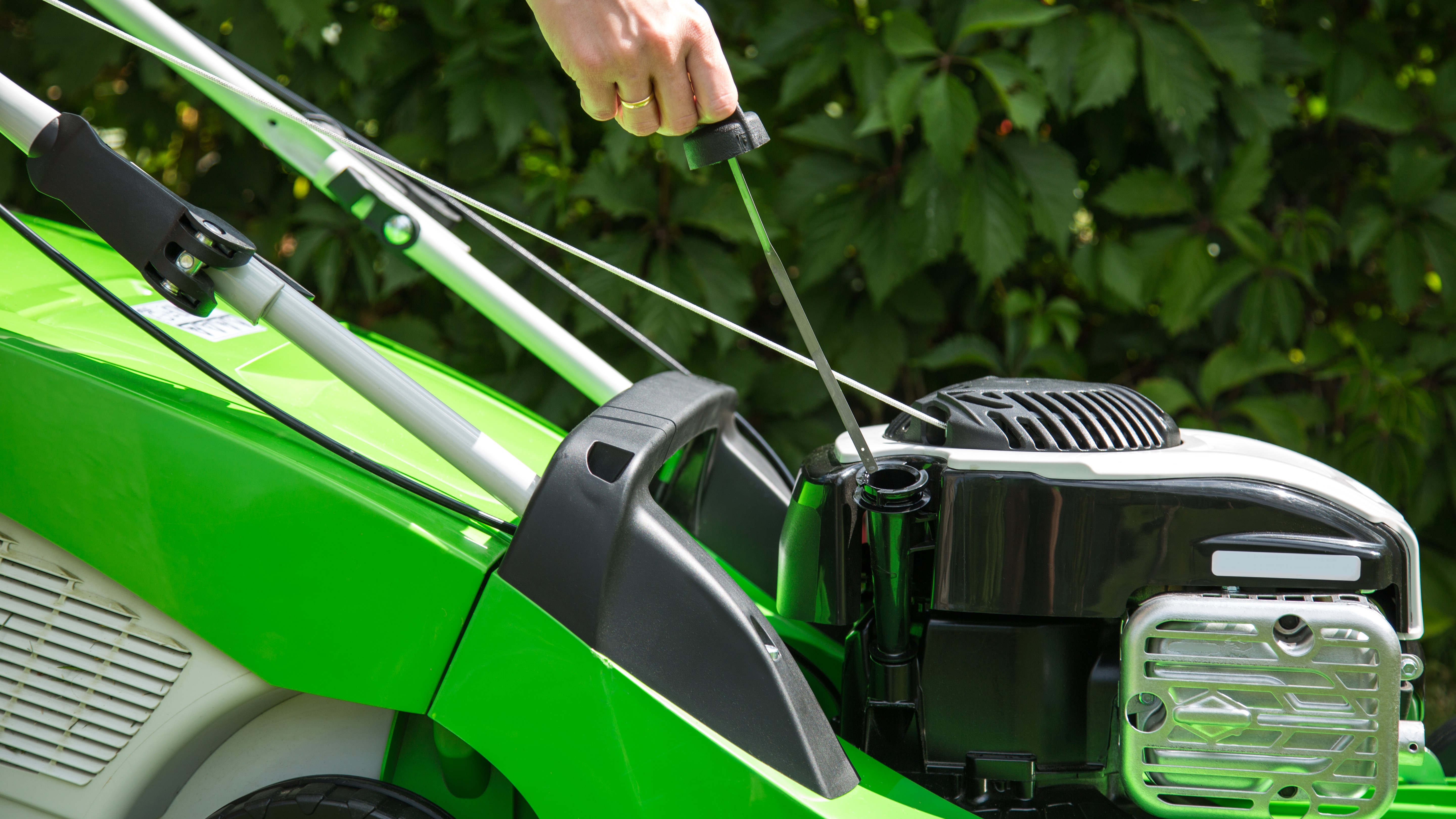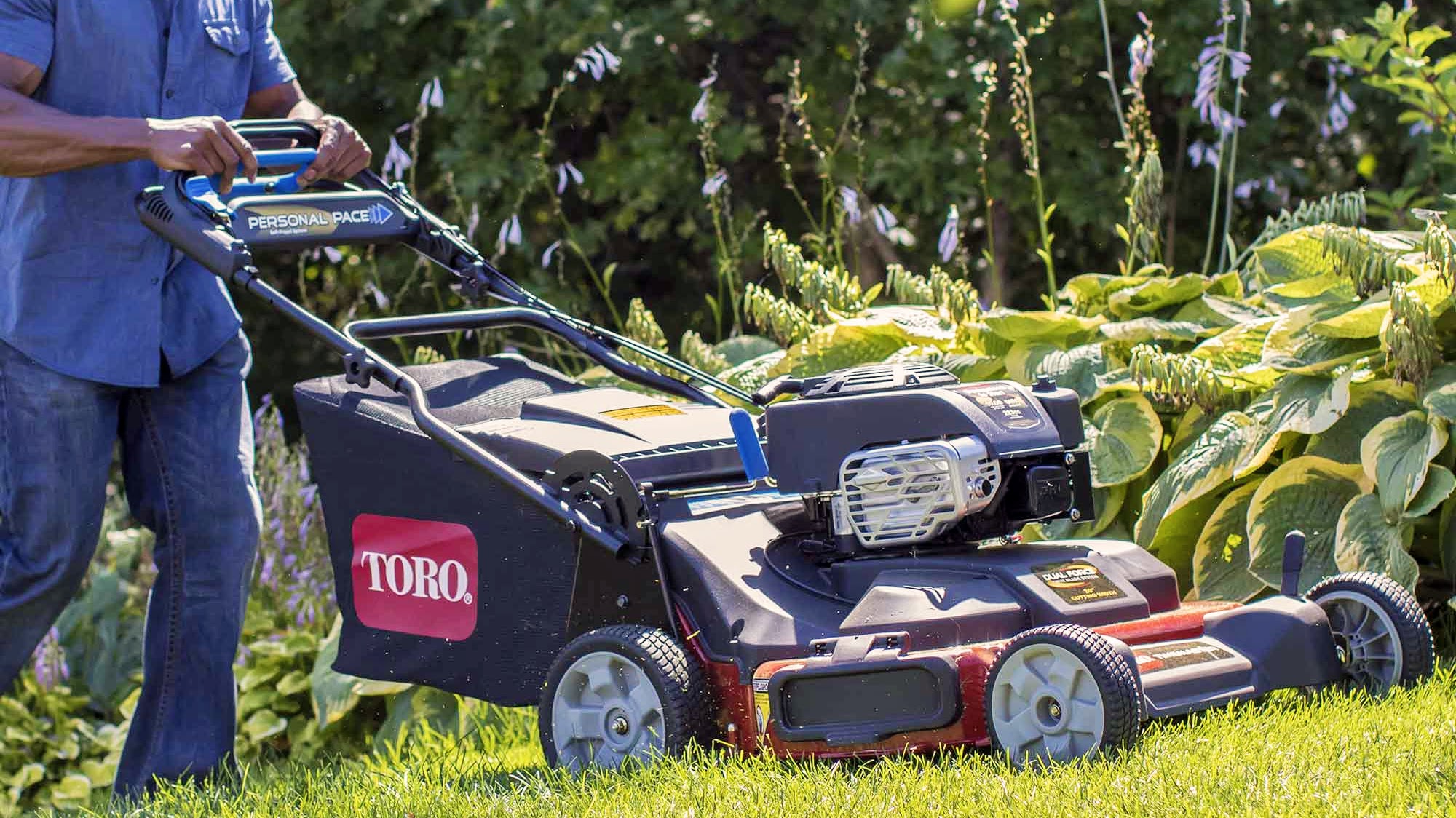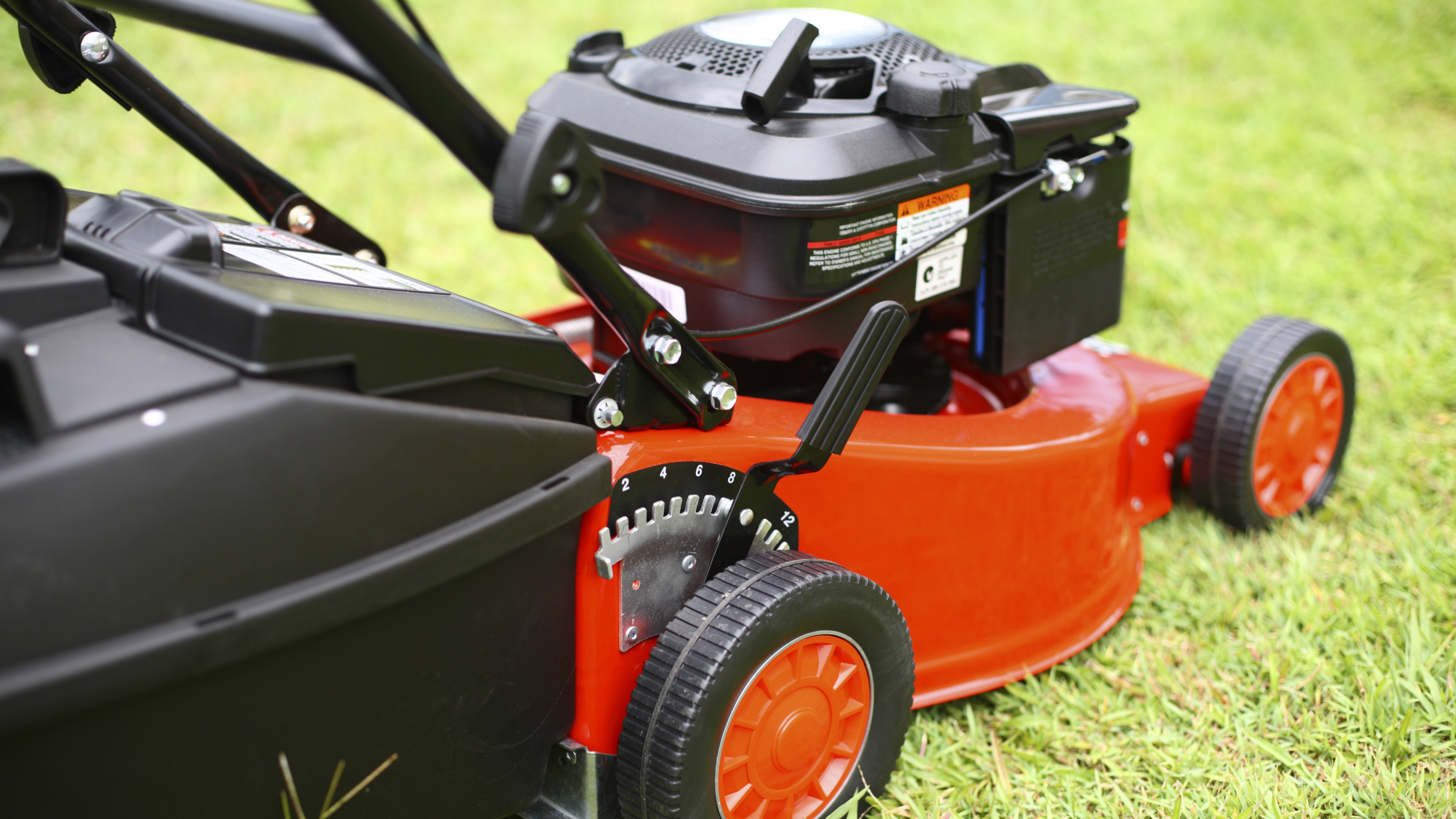How to choose a gas lawn mower
Get the essential know how you need to purchase a gas lawnmower at the right price

- 1. Take into account the size of your yard
- 2. What's your preferred lawn mower type?
- 3. Know your cutting width
- 4. Look for a cutting height that suits your lawn
- 5. Reference the grass collector spec
- 6. How much storage space have you got?
- 7. Weigh up your options
- 8. Set a budget
- 9. What does the warranty cover?
- 10. Check out customer reviews and ratings
- 11. Are there deals worth having?
If you’re on the lookout for a new gas lawn mower to replace your old then you need to know how to choose the right one for you, your budget and your yard.
There are plenty of options to choose from when it comes to gas mowers, and plenty of considerations to make to ensure you get the best gas lawn mower to suit your needs. There’s no point purchasing a gas mower built for large yards if you have a small yard that gets mowed three times a year. You need to look for a lawn mower that suits you and, just as importantly, your budget.
If you have a small yard with little storage space, then a mower with a smaller cutting width and a foldable handle will suit. If you have a large yard and struggle with a heavy mower, look for a self propelled lawn mower.
Read on for our expert guide to decide which lawn mower will work best for you. And to get the most out of your new mower, make sure to read our expert guide on how to maintain your lawn mower for the full-works lawn mower maintenance.
How to choose a gas lawn mower

1. Take into account the size of your yard
What size is your yard? Do you have a small yard, large yard or medium sized yard? Lawn mowers have a recommended working area or capacity to help you decide which lawn mower will work best for your space. In simple terms, a lawn mower's working area is approximately how much area the lawnmower can cover when at full capacity (i.e. with a full tank of gas).
Gas mowers have a wide range of working areas. Typically, mowers for smaller yards have smaller engines, fuel tanks and aren’t as powerful as lawn mowers with a larger working area. But, they are generally a little quieter, aren’t as heavy and are cheaper to buy.
So make sure to measure up your yard before you buy to help decide what mower is going to suit your needs. The most advanced lawn mowers can cover yards of multiple acres, but if your lawn is nowhere near that large then you could save yourself a lot of money.
2. What's your preferred lawn mower type?
Push and self-propelled are the most common types of gas lawn mower, and are typically ideal for most gardens apart from very large yards. For the largest lawns, you may want to consider one of the best riding lawn mowers.
The difference between a push mower and a self-propelled mower comes down to where the power is generated from. Push mowers are powered by you, without any assistance from the mower, while self-propelled models have drive functions to help power the mower's wheels so that you steer rather than push. This can be particularly helpful for heavier mowers and large lawns.
3. Know your cutting width
The cutting width refers to the width of the cut that the blade provides. The bigger the blade, the wider the cut - and the wider the cut, the quicker you can cut your lawn. A 20-inch blade will cut 20 inch stripes, which is good for a small or even medium sized yard. But if you have a large yard you may want a wider blade to save time and effort. However, larger blades typically mean a larger, heavier mower that isn’t as manoeuvrable and will in most cases cost more than a smaller mower.
4. Look for a cutting height that suits your lawn
Gas mowers have adjustable cutting heights, typically adjusted using a handle that you manually move. The heights often range anywhere from 0.75 inches to 4.5 inches depending on what type of mower you choose.
This mostly comes down to preference of how you want your lawn to look and feel. But for your average yard, a lawn mower that can cope with cuts between 1.5 - 2.5 inches is ideal. Start off with a high cut for the first cut of spring or if you have newly planted grass. Then drop down for shorter cuts. If you want your yard to look like a putting green, look for a gas mower capable of a 0.75 inch - or very similar - minimum cutting height.
Sign up to receive the latest news, reviews, buying guides and deals direct to your inbox

5. Reference the grass collector spec
When mowing, a grass collector makes sure that your grass cuttings don’t spread across your yard for you to clear up and dispose of. The larger the collector, the more grass it can collect. This means that you will spend less time emptying the collector.
However some lawn mowers have mulching features, where they shred the grass cuttings into tiny pieces then distribute across your lawn, nourishing your grass as you mow. Look for this when shopping around if you're after a healthy lawn all year round.
6. How much storage space have you got?
If you have limited storage space, it might be better to opt for a gas lawn mower that has a foldable handle to make it more compact. It's important to check the dimensions provided by the manufacturer to see how much space the mower takes up folded and unfolded.
7. Weigh up your options
The lighter a lawn mower, the easier it will be to pick up and carry when finished with, and the easier it will be to move into your storage space. A heavy mower will be harder to manoeuvre around obstacles in your yard making each mow harder on your back and arms. Plus, they often require more gas to operate, so consider whether you can afford the long term costs.
8. Set a budget
Set yourself an upper limit on the price that you are comfortable with. Prices can vary significantly, especially when Black Friday deals come around. Setting a limit means you won’t over spend and will focus your search for a new gas lawn mower. But, just because a lawn mower is at the top of your price range, don’t assume it's the best on offer. Look around and compare with less expensive models. You may find a bargain.
9. What does the warranty cover?
A gas lawn mower should last for at least ten years. But this will vary depending on what type of lawn mower you choose, how often it is used and how well maintained it is. Make sure to check how long the warranty is, 2- 3 years is the common option. Also, check what the warranty covers. Does it cover all parts? And, is the warranty valid if you don’t give the mower an annual service.

10. Check out customer reviews and ratings
Before you buy, choose two or three gas lawn mower models that fit your criteria and make sure to check customer reviews and ratings. Try to look for unbiased reviews on third party sites rather than manufacturer’s sites.
Buying Guides
Best cordless lawn mower: top battery-powered lawn mowers to tackle your yard
Reviews
Worx Landroid S WR165 review: an intermediate-level robot lawn mower
STIHL RM 655 VS Lawn Mower review: a premium gas lawn mower which is a cut above the rest
DeWALT DCMWSP244U2 Cordless Self-Propelled Mower review: an efficient, long-lasting tool
Dewalt DCMWP600X2 60V MAX Cordless Push Mower review: lightweight yet powerful
Husqvarna Automower 450XH review: a fantastic, if flawed, lawn buddy
Mammotion Luba 2 AWD 5000 review: a tech-heavy robot lawn mower for large yards
Segway Navimow i105N robot lawn mower review: smarter, simpler, superior?
Ratings are a quick visual way to get an idea of how good a lawn mower might or might not be. If it has a good overall rating, check the different levels and see how many of the ratings are five and four stars - or similar- and see how many are one or two stars.
For more insight read customer reviews. These often offer real-life experiences of the lawn mower and won’t just tell you why a lawn mower is good, it will reveal some of the drawbacks. Also, you will find that some poor ratings are not always due to the product but customer service or postage problems, so they are always worth a read.
11. Are there deals worth having?
Throughout the year you are bound to find a lawn mower deal that fits the bill. It would be worth paying particular attention to sales events too. Black Friday lawn mower deals, for example, saw deals of up to 60% off corded and cordless mowers which made it a great time to buy ahead of the first mow of the year. Starting keeping watch in the months leading up to the event because some retailers are known to inflate prices before Black Friday so that it looks like the discounts are huge. It's hard to resist a deal that shouts 60% off, but in reality you might only be getting 20% off the RRP.
Don’t jump at the first deal you see, make sure to do some research and see what prices are being offered elsewhere. If you’re really keen, try looking at prices on a product you want a week or two before to see what the cost is - this will help discover how good of an offer you're getting.
Prime comparison sites like CamelCamelCamel and Honey will show you price history, and both are free to use. This is an effective indicator to see how good of a deal you're getting.
